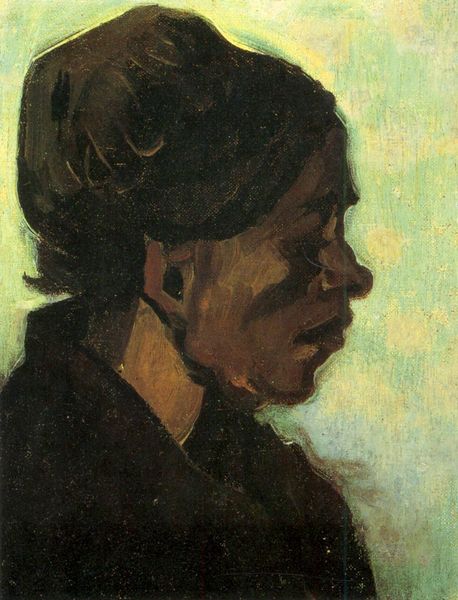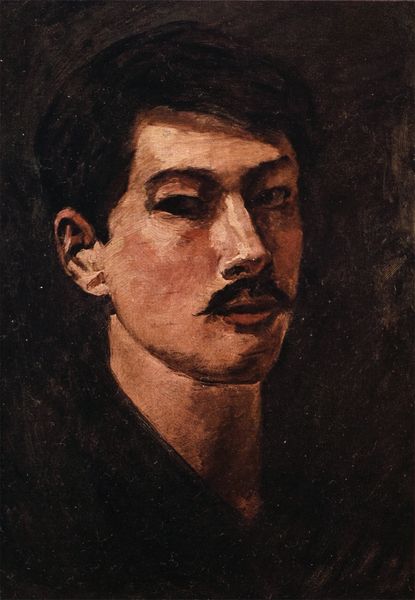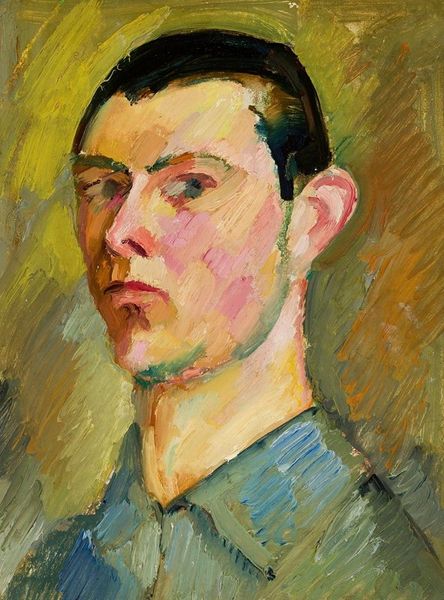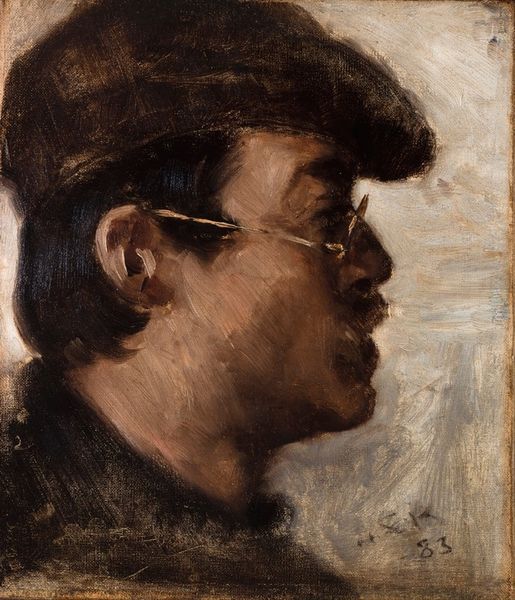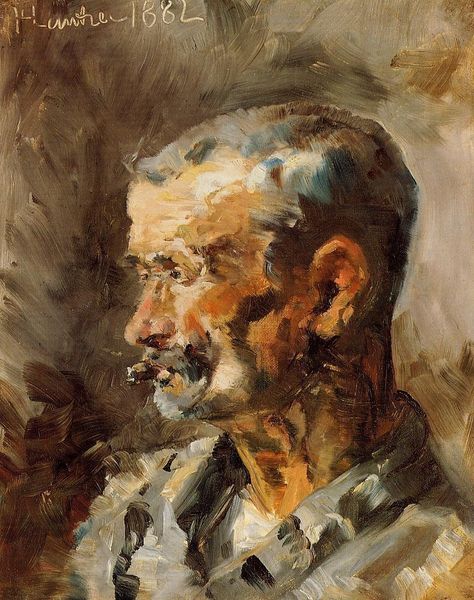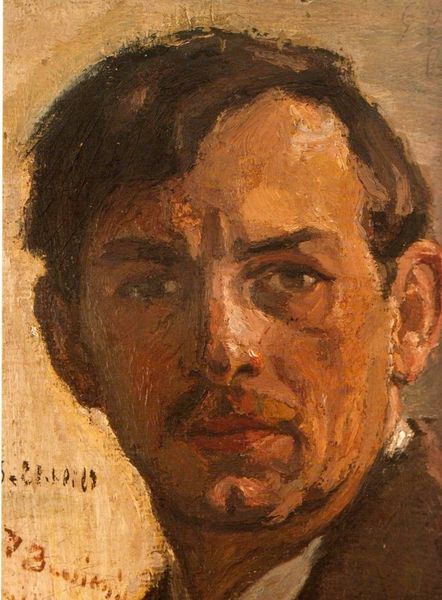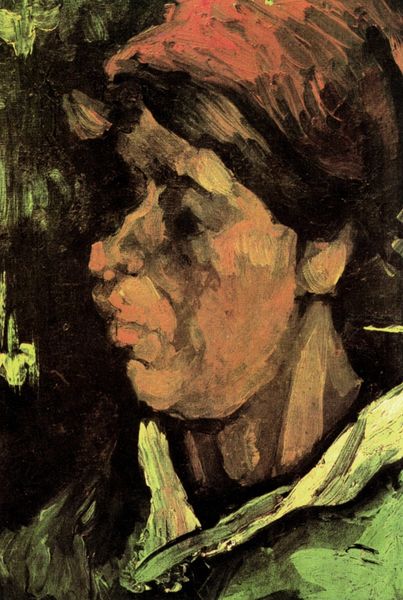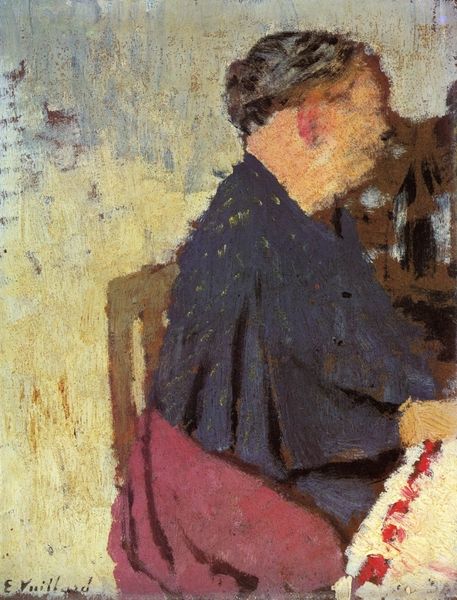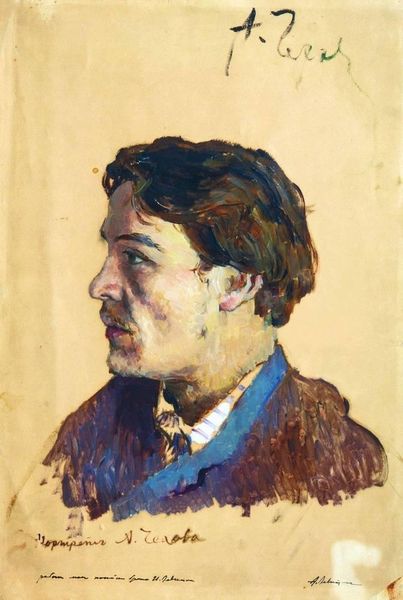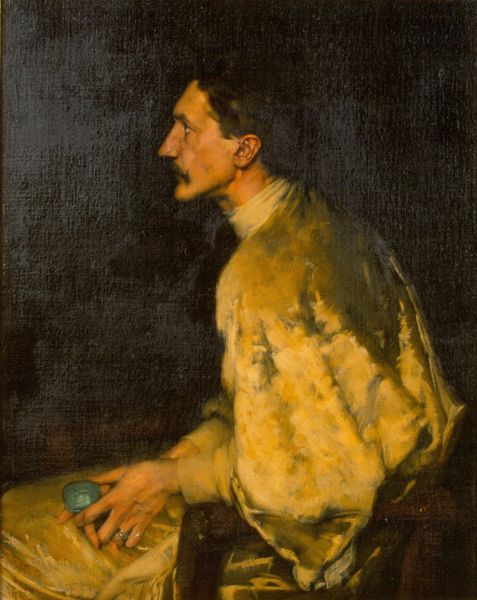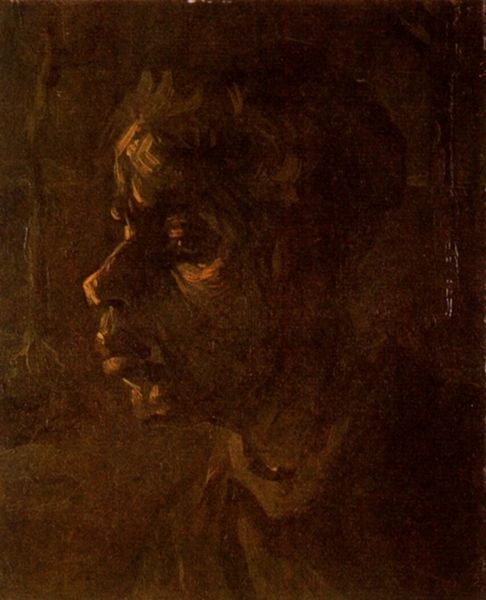
painting, oil-paint, impasto
#
portrait
#
dutch-golden-age
#
painting
#
oil-paint
#
impasto
#
post-impressionism
#
realism
Copyright: Public domain
Vincent van Gogh created this Head of a Peasant with oil on canvas, likely in the Netherlands during the 1880s. Van Gogh was deeply interested in the lives of working-class people, and this portrait is part of a series that explores the dignity and hardship of rural life. It is a work that focuses on the humanity of the sitter, and is deeply sympathetic to the lives of working people. But how does the painting operate as a social document? Consider the ways in which Van Gogh uses expressive brushstrokes and a somber palette to convey the peasant's weathered features and worn expression. In the late 19th century, the art world was largely dominated by images of the bourgeois, but Van Gogh was drawn to the realities of labor. This move aligns him with a progressive desire to critique the institutions of art. To understand this choice, one might consider the artist’s letters, to contextualize his relationship with the art market, or explore records of social movements in the Netherlands at this time.
Comments
No comments
Be the first to comment and join the conversation on the ultimate creative platform.
